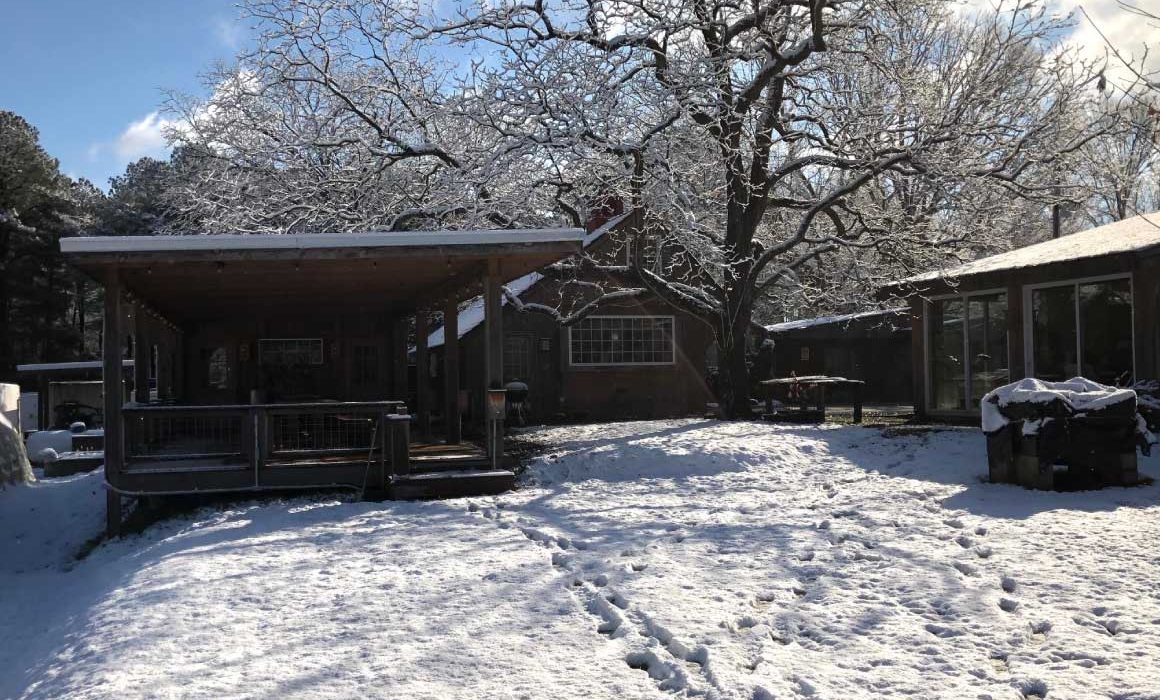

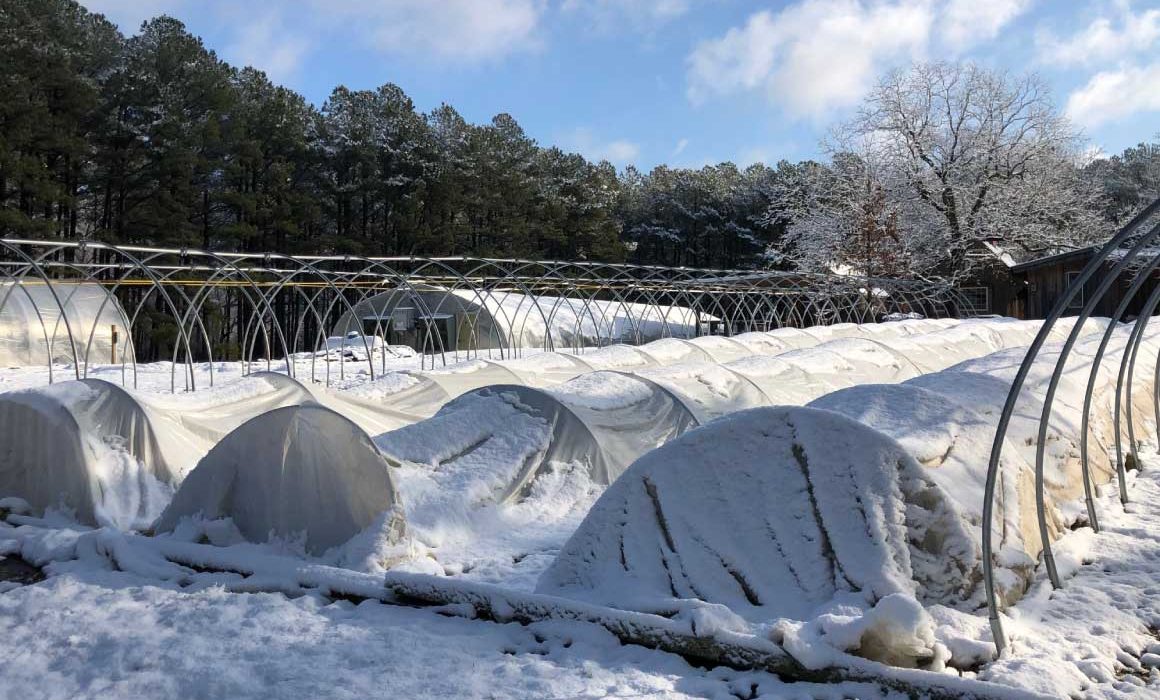
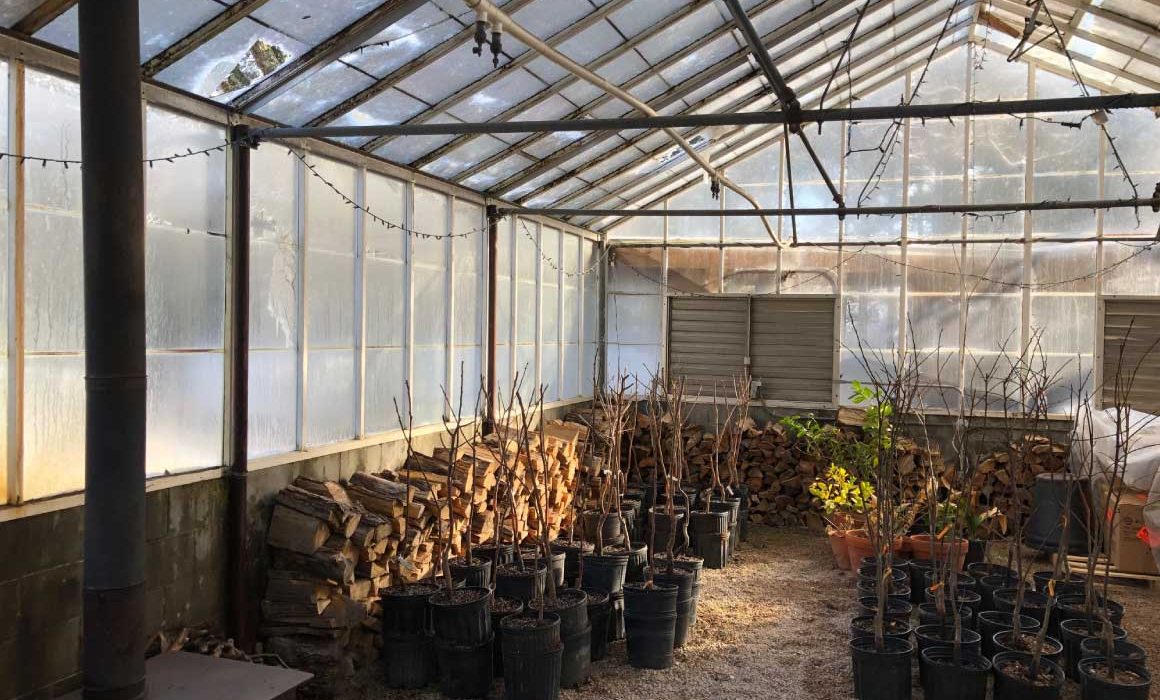

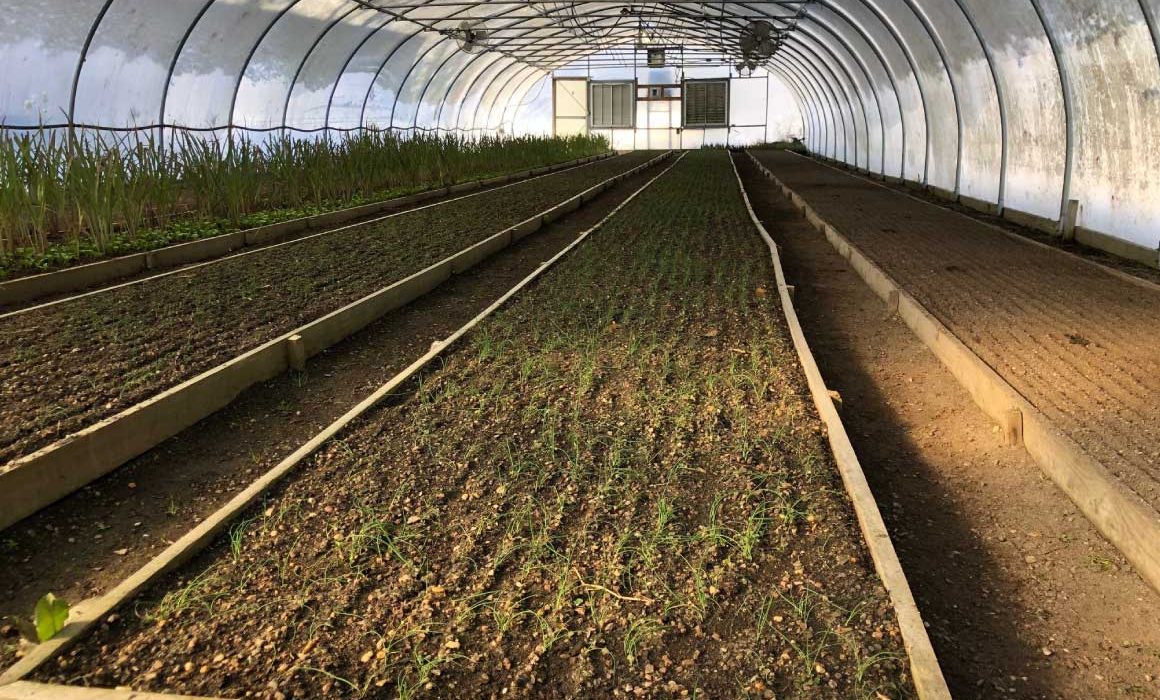

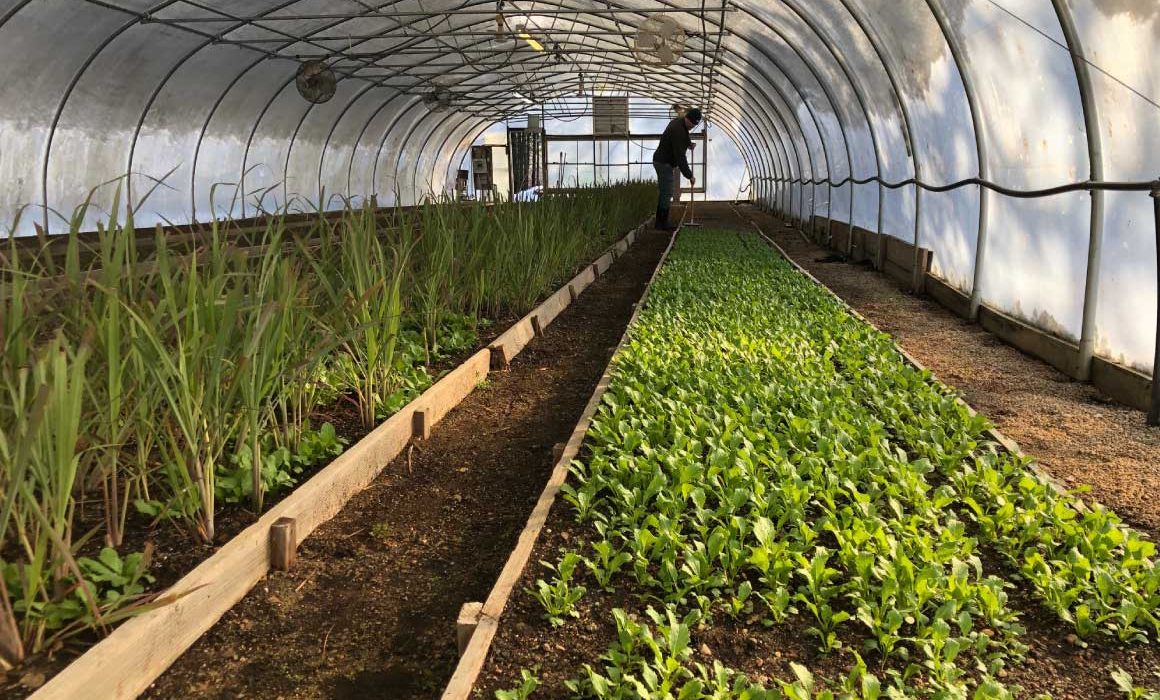



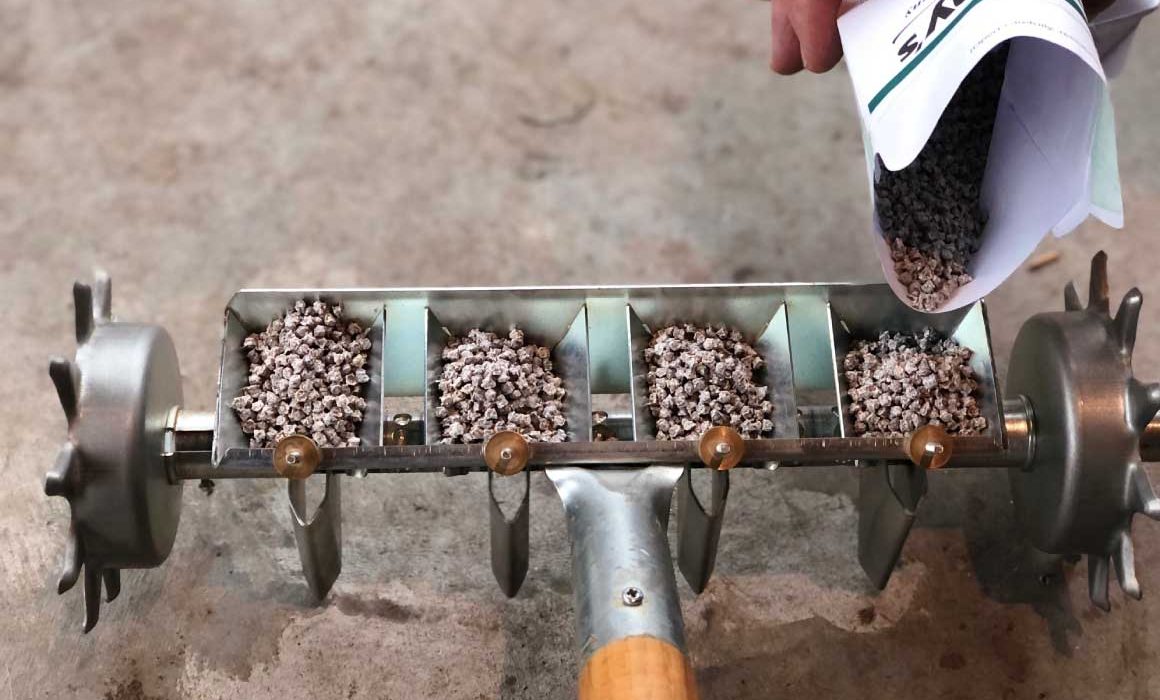


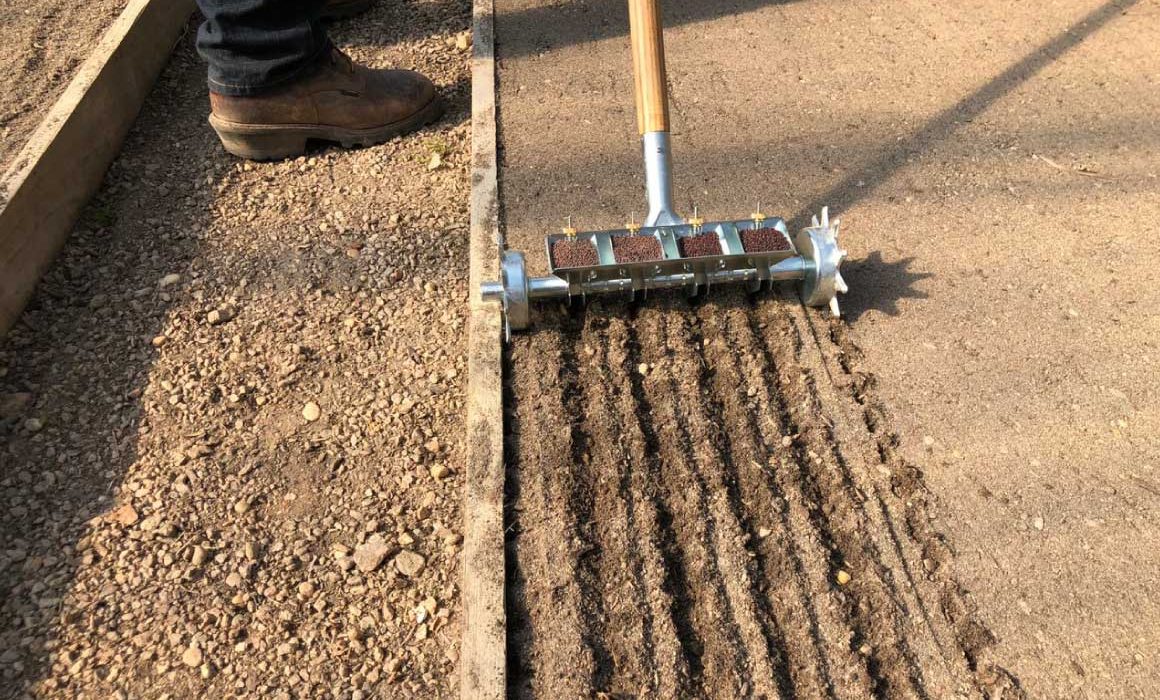
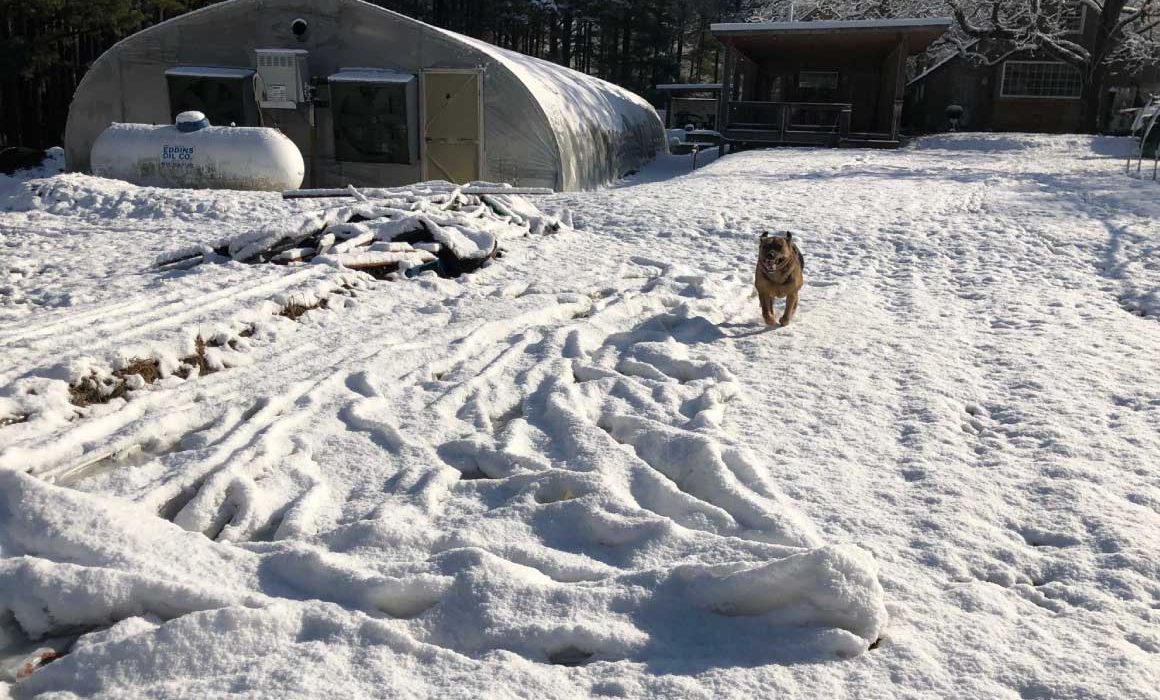
2021 February News
There is nothing like going into a greenhouse after a fresh winter snow. The light inside takes on a blueish grey hue that warms in color as the sun rises. A greenhouse with some supplemental heat followed by the natural warming of the sun is a cozy place in winter. The perfect space for seeding in preparation of spring. By the beginning of February, we are well underway with indoor seeding for the spring season. We start seeding what we plan to set out as soon as the weather will allow, or whatever we can accommodate with additional winter protection.
It is a delicate balance to stay ahead of the spring growing season in the Eastern North Carolina Piedmont. Spring can pass you by in the blink of an eye. However, last year was an unusual long spring, and a beautiful one at that. But In years past, summer seems to arrive earlier and earlier. And instead of waiting until weather is optimal for direct seeding in the field; we take the time and effort to grow up sturdy little plants in our greenhouse. Then, when the time seems to be about right, we go straight to the field with our established plants.
Starting the spring crop early has more than a few advantages. First and foremost, starting plants — early — reduces some uncertainty of which there is no shortage of in farming. Spring crops, that take more days than most to reach maturity, can get a jump start on the growing season. Starting seedlings in a controlled environment allows greater predictability with germination, emergence and establishment of plant roots. Spring weather can fluctuate around here. It can be windy and rainy most of one week; chilly and dry the next, followed by a really nice stretch of beautiful weather, and then summer overnight. Initially starting a healthy plant, in a controlled environment, is well worth the investment and peace of mind.
We start with a number of varieties of cool weather vegetable plants: such as beets, kale, frisée, escarole, rainbow chard, leafy greens etc. Gaining that additional 4 to 6 week jump on things is key. Some of the other cool weather root vegetables, such as, carrots, radishes, “Hakurei” turnips, to name a few, are directly sown in our greenhouse beds, and directly sown in the field. Directly sown spring field crops will be given some form of late winter/early spring protection. An example would be *frost/ freeze blankets or the use of a *low tunnel or both. Our warm season crops will be seeded next month.
We are looking forward to spring, but until then, It’s time to head back to the greenhouse and sow some seed.
Eat a Peach.
Steve